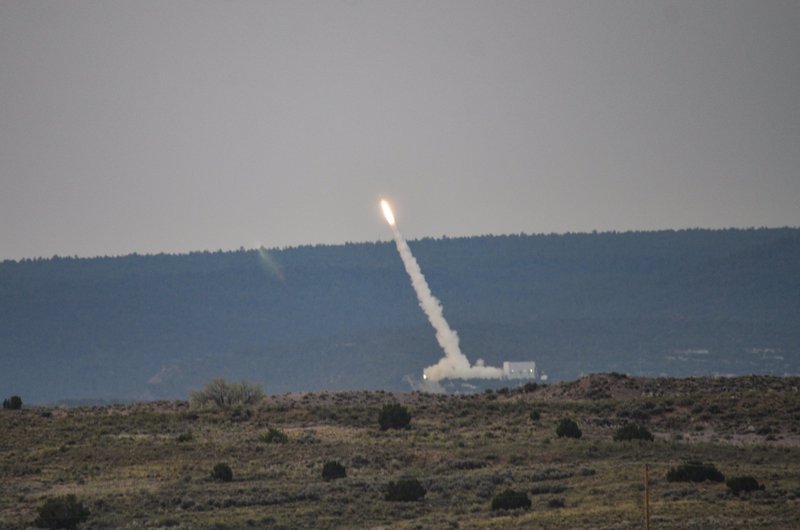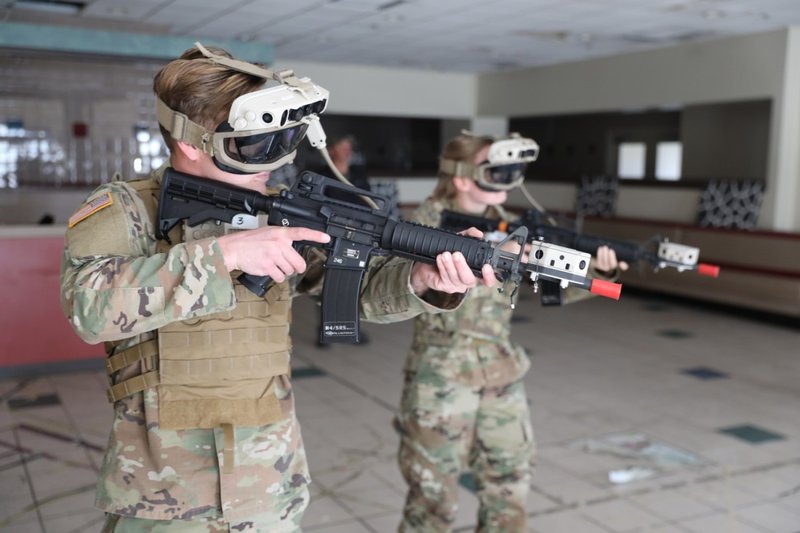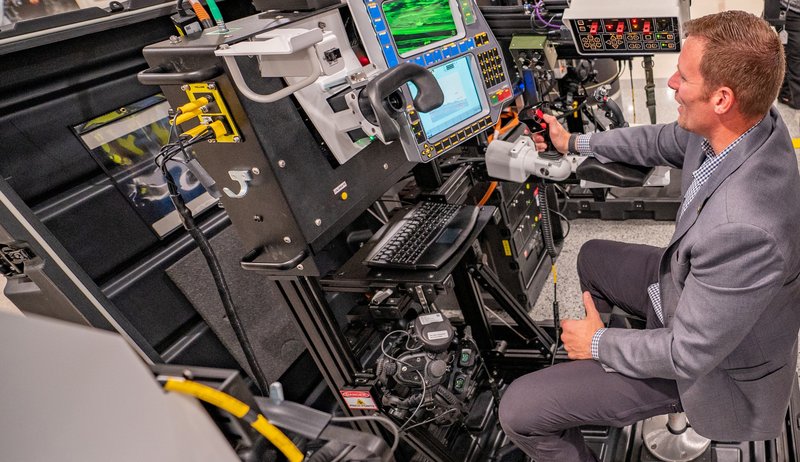Decisive Edge Newsletter | Training | August 2023
Newsletter Sponsors:
British Army collective training – the race is on at last
The starting gun has finally been fired by the UK MoD in the competition to select its Strategic Training Partner (STP) for the Army Collective Training Service (ACTS), known until recently as Future CTS (FCTS).
The competition had been expected to start in late January but was delayed, in part by the need to get approval from the Cabinet Office.
According to the tender announcement published on 3 August, the 15-year contract is worth between £1.9 and £2.5 billion ($2.4 and $3.2 billion). The announcement notes that ‘collective training aims to develop the ability of small teams to entire units and formations to function as… cohesive entities’, adding that around 60,000 soldiers are involved in such training annually.
The aim is to revolutionise this through the Collective Training Transformation Programme (CTTP), with the army and the winning STP jointly developing and implementing ACTS.

Find out more about MVRsimulation’s fully accredited Deployable Joint Fires Trainer (DJFT) here.
The army’s vision for ACTS is that it ‘will deliver an integrated, expeditionary and digitalised training system, with the flexibility to allow the army to train globally when and where it needs. It will prepare land force elements to meet their defence outputs and allow the army to train, in challenging, realistic, multi-domain and world-leading environments – including instrumented urban.’
At the project launch event on 7 August the programme director, Brig John Wakelin, explained that there are two key aspects: transforming the training enterprise through data exploitation, connectivity and an improved training system; and transforming the training experience through a blend of live, virtual and constructive (LVC) environments including a single synthetic environment (SSE), and enhanced urban facilities.
Under the contract the STP will be expected to deliver a package of services. It will be jointly responsible with the army for governance, and take on most aspects of direction, analysis, design, delivery, development and validation of the system, although the tender document emphasises that ‘collaboration… will be an essential enabler to achieve the services’.
These services will include:
- scheduling events and booking resources and facilities;
- developing specific exercises and scenarios to meet training needs;
- provision of a holistic logistics service;
- provision of support and advice on facilities improvement;
- provision of audiences, actors, adversaries and enemies (A3E), specialist trainers and instrumentation;
- provision of simulation and emulation;
- provision of an observation and review service;
- establishing a cloud support service to provide global connectivity; and
- a monitoring service to ensure that the system remains attuned to changes in army strategy, threats and allies, as well as incorporating lessons learned.

Providing mission-critical training and equipment, this elevated level of innovation can only be provided by the best in the industry. Visit FlightSafety.com.
There are 129 service requirements in all. The exact apportionment of responsibility for each element between the army and the STP will be subject to negotiation with the successful tenderer.
There will also be government-furnished assets including facilities, equipment, services, resources and information that the STP may need to manage.
The competition has several stages, with the initial hurdle being the Dynamic Pre-Qualification Questionnaire (DPQQ), which has just been launched, with responses required by 10 September.
The DPQQ is designed to ensure that potential bidders are suitably qualified and experienced, and are capable of meeting the contract requirements. Shephard understands from one of the declared tendering consortia that the DPQQ for this contract seems to be more rigorous and demanding than usual.
This assessment should be complete by October, after which the procurement process will move to the Invitation to Negotiate (ITN), which will have two stages.
ITN1 will involve all those who have passed DPQQ. They will receive the Service Requirement Document (SvRD) containing detailed requirements for each service element of ACTS, together with other materials to assist bidders in developing solutions and costings.
A draft SvRD has already been issued to interested parties, who have been able to comment and seek clarification.
‘Shephard understands from one of the declared tendering consortia that the Dynamic Pre-qualification Questionnaire for this contract seems to be more rigorous and demanding than usual.’
ITN1 will begin in late October/early November and last 16 weeks. Bidders will be invited to submit initial tenders, which will include outline proposals covering different aspects of the STP requirement. These will be evaluated and the two highest-ranked will move to ITN2.
These bidders will be awarded development contracts enabling them to mature proposals put forward in ITN1 and provide associated pricing. They will also have to complete five development tasks to demonstrate their solutions to different aspects of the requirement.
ITN2 is expected to start in late February/early March and last eight months. Delivery contract negotiations will also take place during this period. If all goes according to plan the 15-year delivery contract should be awarded some time in 2025.
So far, three competing consortia have announced their intention to bid. There are several others that have not yet made formal announcements but are believed, with varying degrees of certainty, to be candidates.
In November 2022 Raytheon UK announced that it had formed Omnia Training in partnership with Capita, Cervus, Improbable Defence and Rheinmetall Electronics UK. Shortly afterwards KBR, PA Consulting and QinetiQ announced that they had formed Team Paladin.
In May, at the DSET 2023 conference, Lockheed Martin UK (LMUK) announced it was leading a seven-company collaboration called Alliance to bid for the STP role. The partnership consists of LMUK, 4GD, Cubic Defence UK, KX, Ravenswood Technologies UK, Splunk, and Turner and Townsend.
As well as these competitors Shephard believes that Elbit Systems UK, which already has a significant footprint in the provision of training and simulation capabilities and services to the British Army, will be bidding as a prime although it has not revealed with whom it will partner.
A recent post on social media also confirmed that Babcock International will be bidding, although there is no information yet as to its partners.
Shephard understands that Leonardo will also be an STP contender while other possible candidates from amongst the major defence contractors are Boeing, CAE and Northrop Grumman. What is not yet clear is whether any or all of these would be involved as a prime or as a consortium member.
BAE Systems has ruled itself out, having in March been awarded the contract, with Pitch Technologies, for the CTTP land test and reference capability that will ‘define the technical assurance requirements for synthetic warfare training systems which utilise [a] virtual environment’, according to a BAE press release.

Above: Although it has yet to reveal its hand, as an existing partner on various British Army training contracts, Elbit Systems UK is widely expected to bid. (Photo: Elbit Systems UK)
There is also the possibility that a major company not normally associated with the defence world could put together a consortium.
DSEi in September will almost certainly be the forum in which formal announcements will be made.
There are clear differences in the philosophies that the declared consortia are adopting, both in composition and approach.
Omnia has assembled a team principally consisting of specialist defence companies that could cover all the necessary bases between them, with Raytheon UK as prime contractor.
Adopting a very different line, Paladin is based on an enterprise construct with all three partners having equal responsibility; specialist providers will be selected for specific elements and for limited timescales, allowing more flexibility in the introduction of new technological solutions.
Alliance’s approach is based on a collaboration charter and includes companies that are deeply involved in defence, such as Cubic, Ravenswood and LMUK itself, while other members, such as KX and Splunk offer considerable analytical and data capabilities but are not principally associated with MoD contracts.
The fundamental question is whether this approach of giving a commercial partner a key role in such an important area will work.
The Royal Navy’s Selborne programme, although slightly different, appears to be a success. The army certainly seems convinced that this is the way to go: there is an appetite for change at the highest levels and a strong desire to redesign the collective training system.
As Wakelin put it ‘[we are] a small and busy army struggling to make time for collective training [and] we need to think differently’.
CTTP should bring a fresh approach, better use of resources, modern and evergreen technology, a much better understanding of training effectiveness and therefore readiness, and greater continuity of management (an unstated but real benefit).
Ultimately, will it produce a more effective army at a time when resources are limited and quality, in terms of collective competence, may have to provide some balance to a lack of quantity?
Solving a Polish air defence training challenge
The introduction of a new item of equipment into service always requires an accompanying training programme. This may seem an obvious statement, but it is only relatively recently that major defence procurement tenders have routinely specified the provision of simulators to support that training as an integral part of the package.
An associated issue is the provision of this training when a major item of equipment that is already in service domestically is first sold to a foreign customer.
This is invariably accompanied by a training package in the format that customer needs, particularly in terms of language, and is generally based on materials which are already developed.

Above: Northrop Grumman has delivered an IBCS training solution to Poland using English-language materials. (Photo: US Army)
But what do you do when such an item is sold before it has been fully introduced into domestic service and the base training package is not sufficiently developed?
That was the problem posed by the purchase of Northrop Grumman’s (NG’s) Integrated Battle Command System (IBCS) by Poland before it had even reached initial operating capability with the US Army, which is expected later in 2023.
NG describes IBCS as implementing ‘a modular, open and scalable architecture that is foundational to integrating available assets in the battlespace, regardless of source, service or domain onto a common fire control network’.
Originally designed as a command and control (C2) system for ground-based air defence the US is now looking to broaden IBCS application, but Poland is procuring it as the C2 system for its WISŁA medium-range air defence system, with the first components delivered in May 2023.
In the absence of any established IBCS training package NG has developed the Air Defense Reconfigurable Trainer (ART), which it announced in June 2023 had been delivered two years ahead of schedule.
According to NG the ART ‘hosts NG-developed training content that will prepare the Polish military to operate and maintain the IBCS system’.
It was built using material developed for the US Army’s new equipment training, NG said, and it ‘allows the end user to augment in-person training as well as conduct self-paced sustainment training. This accelerates training speed and efficiency while simultaneously reducing potential cost.’
It is an unclassified individual skills trainer that consists of a server set, an instructor console and a configurable number of trainee workstations. The package concentrates on individual users and is not intended for team training in its current configuration.
The system is focused on the C2 elements of IBCS and includes simulations of emplacing and march-ordering system-specific equipment. It is a stand-alone solution and not embedded in the operational hardware.
Interestingly, the language used throughout the training material is English and no Polish translation has been made, which NG said was ‘in line with system requirements’. This may be because the IBCS itself is being delivered with English as the operating language, although that is not confirmed.

Above: The US Army has not yet set out any requirement for an individual skills trainer for IBCS. (Photo: US Army)
There has been some specific Polish customisation, including using accurate vehicle and other markings, colours and uniforms in the simulations and e-learning material.
The US Army’s intentions for fielding an IBCS individual skills trainer have not yet been made known – if indeed there is any intention of providing one.
However, NG also notes that the ART, including the learning management system, can host a wide variety of training material that is Shareable Content Object Reference Model (SCORM)-compliant. SCORM is a set of technical standards for e-learning software.
That flexibility ‘opens the door to a wide variety of future training possibilities’, including other IBCS sales programmes. IBCS’s use by Poland is likely to be expanded to include the NAREW short-range air defence programme, and ART clearly could be developed to cover other systems as well.
US Army’s training transformation drive reports mixed results
The US Army is continuing a drive to transform its training capability, both individual and collective, through development of the Synthetic Training Environment (STE), with the award of further development and production contracts for systems that will either replace existing equipment or provide new capabilities.
However, this process is not going entirely smoothly.
The STE vision is for a ‘a single, interconnected training system that provides a training environment in which units… conduct individual and collective training’. The aim is to deliver training at the point of need, with common data, common standards, a common terrain database and an open architecture.

Above: Teething troubles with the IVAS headset have hampered the Squad Immersive Virtual Trainer project, but soldier feedback has been helpful in identifying the issues. (Photo: US Army)
This is a bold vision which includes several systems addressing different elements, all related to a common core, the STE Information System (STE-IS). This itself consists of Training Simulation Software (TSS), the Training Management Tool (TMT) and One World Terrain (OWT).
Falling under the Program Executive Office Simulation, Training and Instrumentation (PEO STRI) and the STE Cross-Functional Team (CFT), one notable characteristic of the STE effort has been its agile acquisition and rapid prototyping approach through use of the Other Transactional Authority (OTA) contract vehicle.
This has enabled prototype solutions to be developed rapidly and given to soldiers for testing, allowing an iterative process which is centred on the potential user rather than the developer or acquisition authority.
This delivers early tangible results, and although the resulting prototypes may not provide a solution, they are valuable steps on the journey to developing a final product.
The latest example is an OTA contract award to a partnership led by CAE USA for Phase II of the Soldier Virtual Trainer (SVT) programme, announced by the company in July.
The partnership, aside from CAE, includes 4C Strategies, FAAC, Haptech, Odyssey Arm and Serious Simulations. The same group produced a Phase I SVT solution following a $2.9 million OTA award in June 2022. Phase II will finalise this prototype over 20 months.
The SVT, one of the individual systems integrated with the common core, is an immersive trainer using virtual, mixed and augmented reality (VR/MR/AR) that will provide individual training in three areas: weapons skills development (WSD), use of force (UoF) and a joint fires trainer (JFT).
It is described in the 2021 RfI as a ‘soldier-enabled training capability that develops… the skills necessary to employ individual and squad organic weapons, certification/qualification of Joint Fires Observers and non-lethal equipment’.
It will replace, respectively, the existing Engagement Skills Trainer (EST), various COTS UoF systems, and the Call for Fire Trainer (CFFT), and provide these capabilities in a single solution that can be used at the point of need.
Although CAE’s prototype is still under wraps, its partners offer a range of expertise. Serious Simulations specialises in VR/AR/MR weapon training systems; Haptech provides drop-in kits and surrogate weapons; FAAC offers UoF simulators; Odyssey Arm has produced devices that integrate weapons with VR; and 4C Strategies is a developer of training management systems. CAE itself obviously has huge experience in training and simulation.
Another system that will be integrated with STE-IS is the Reconfigurable Virtual Collective Trainer (RVCT), which will replace the Close Combat Tactical Trainer and Aviation Combined Arms Tactical Trainer. A $500 million OTA production contract was awarded to Cole Engineering Services in May 2023. RVCT platforms will be deployed at 14 sites by 2028.

Above: The tank commander’s seat of an M1A2 Abrams tank simulated by a Reconfigurable Virtual Collective Trainer during a demonstration at the Pentagon. (Photo: US Army)
Although SVT and RVCT are on track, other elements of the STE programme have not had such a smooth progression.
The Squad Immersive Virtual Trainer (SIVT), which will allow for rapid conduct and repetition of squad-level training in an MR-based synthetic environment, relies heavily on the Integrated Visual Augmentation System (IVAS). This is a head-mounted display that can provide AR for both training and operations, procurement of which is the responsibility of PEO Soldier.
The IVAS programme has faced some setbacks related to the technology and is now nearly two years late in fielding, although recent tests of a new version were promising and some limited deployment for training is expected to commence soon.
However, the project has demonstrated the value of the iterative development process as the faults with the initial versions were exposed through user trials by soldiers.
Equally, the initial sweeping vision for the STE Live Training System (STE LTS) of replacing current laser-based tactical engagement simulation systems (TESS) with an entirely new laser-less system has had to be modified after it collided with reality.
Although there has been a series of OTA contracts awarded to develop prototypes for a new system, a hybrid ‘bridge’ solution that will extend to 2032 and incorporates existing equipment is now being sought. But as the technology to support non-laser systems such as geo-pairing and photographic solutions develops, so they will be incorporated into the eventual STE-LTS.
Don't want to miss out on future Decisive Edge content? Make sure you are signed up to our email newsletters.












